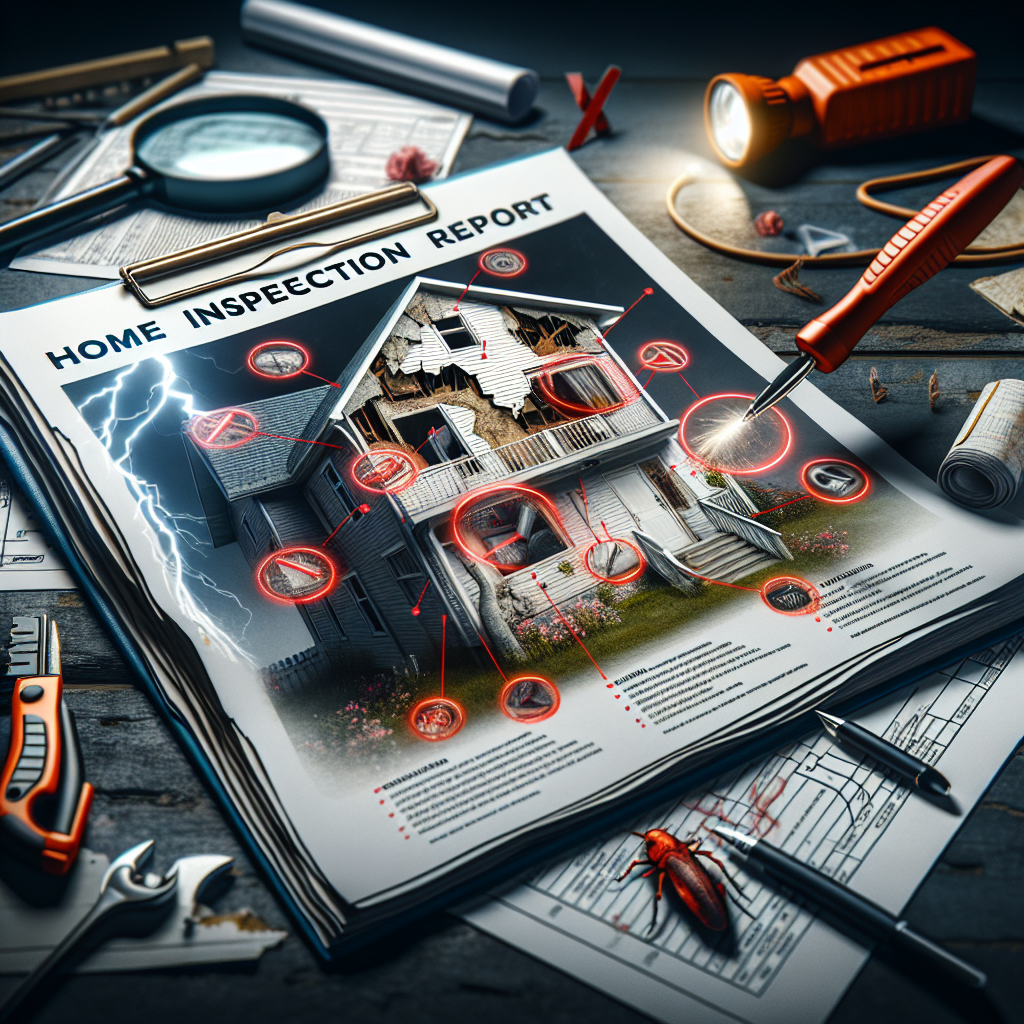“Revealing Hidden Dangers: Protecting Lives through Thorough Home Inspections.”
Introduction: , highlighting any existing or potential issues. Among these concerns, critical safety issues are paramount and require immediate attention to ensure the well-being of occupants. These safety concerns pose significant risks that could result in accidents, injuries, or even fatalities if left unaddressed. Identifying and addressing critical safety issues revealed in a home inspection report is essential to maintaining a safe living environment for homeowners and their families.

The Importance of Addressing Electrical Hazards in Home Inspections
A recent home inspection report has uncovered critical safety issues related to electrical hazards. This report highlights the importance of addressing these hazards in home inspections. Electrical hazards are a significant concern as they can lead to serious injuries, fires, and even death if not properly addressed.
One of the most common electrical hazards found during home inspections is outdated or faulty wiring. Homes built several decades ago may have outdated electrical systems that do not meet current safety standards. These older systems often cannot handle the increased demand for electricity from modern appliances and electronics, leading to overloaded circuits and potential fire risks.
Additionally, faulty wiring can also pose a significant danger. Damaged wires or loose connections increase the risk of electrical shocks and fires. It is essential for homeowners to be aware of any signs of faulty wiring, such as flickering lights, frequently tripped circuit breakers, or outlets that feel warm to the touch.
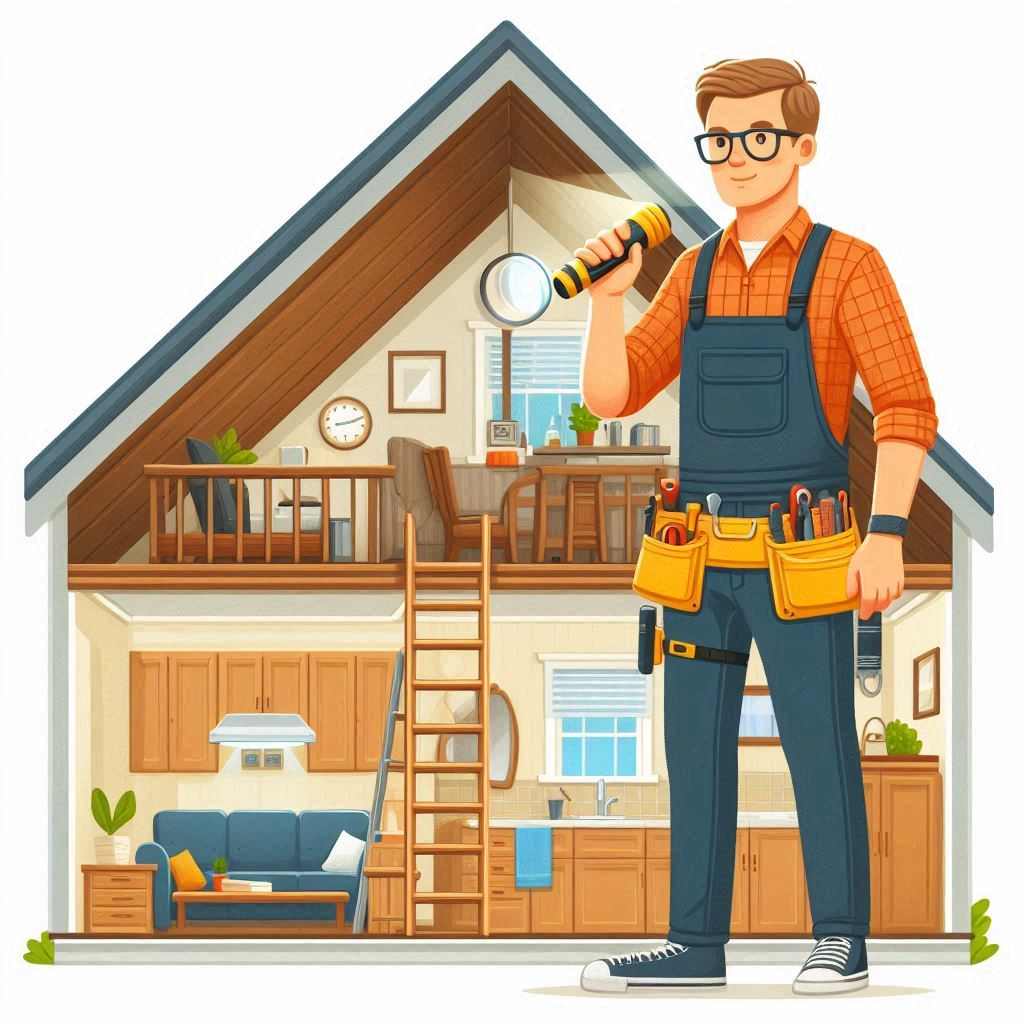
Another critical safety issue revealed in the home inspection report is inadequate grounding and bonding. Proper grounding ensures that excess electrical energy is safely directed into the ground instead of flowing through household appliances or causing electric shock incidents. Bonding refers to connecting metal components within an electrical system to prevent electric shocks if there is a fault with an appliance or fixture.
Inadequate grounding and bonding increase the risk of electrocution for individuals within a home. It also leaves appliances vulnerable to power surges caused by lightning strikes or faults within the utility’s power supply network.
Furthermore, insufficient insulation on exposed wires poses another significant hazard identified in this report. Exposed wires increase the likelihood of accidental contact with live electricity, putting residents at risk for severe injury or even death due to electrocution.
Additionally, uninsulated wires create opportunities for short circuits which can result in sparks igniting nearby flammable materials like curtains or furniture upholstery – increasing the risk of house fires significantly.
The importance of addressing these electrical hazards during home inspections cannot be overstated because failing to do so puts occupants at risk. Electrical hazards are not always easily detectable by homeowners, making professional inspections crucial for identifying potential dangers and taking the necessary steps to mitigate them.
When electrical hazards are identified in a home inspection report, it is essential that they are promptly addressed by qualified electricians or contractors who can assess the severity of the issue and provide appropriate solutions. This may include rewiring parts of the house, updating electrical panels, replacing outdated fixtures or appliances, or improving grounding and bonding systems.
Ultimately, prioritizing electrical safety during home inspections is vital for ensuring the well-being of homeowners and their families. It also helps protect their property from potential fire damage caused by faulty wiring or inadequate insulation.
In conclusion, this recent home inspection report highlights critical safety issues related to electrical hazards. Outdated or faulty wiring, inadequate grounding and bonding systems, as well as insufficient insulation on exposed wires were among the key concerns identified. Addressing these hazards through professional inspections and prompt repairs is crucial for ensuring occupant safety and minimizing risks associated with electrocution and fires.
Unveiling Hidden Structural Weaknesses: A Focus on Foundation Issues
A recent home inspection report has revealed critical safety issues in several houses across the city. Specifically, this article will focus on the hidden structural weaknesses found in the foundation of these homes. The importance of a solid foundation cannot be overstated, as it is crucial for maintaining the integrity and stability of any structure.
Upon examination, it was discovered that many of these homes had various problems with their foundations. These issues ranged from cracks and uneven settling to moisture damage and inadequate support systems. Such deficiencies not only compromise the safety of occupants but also decrease the value and longevity of the property.
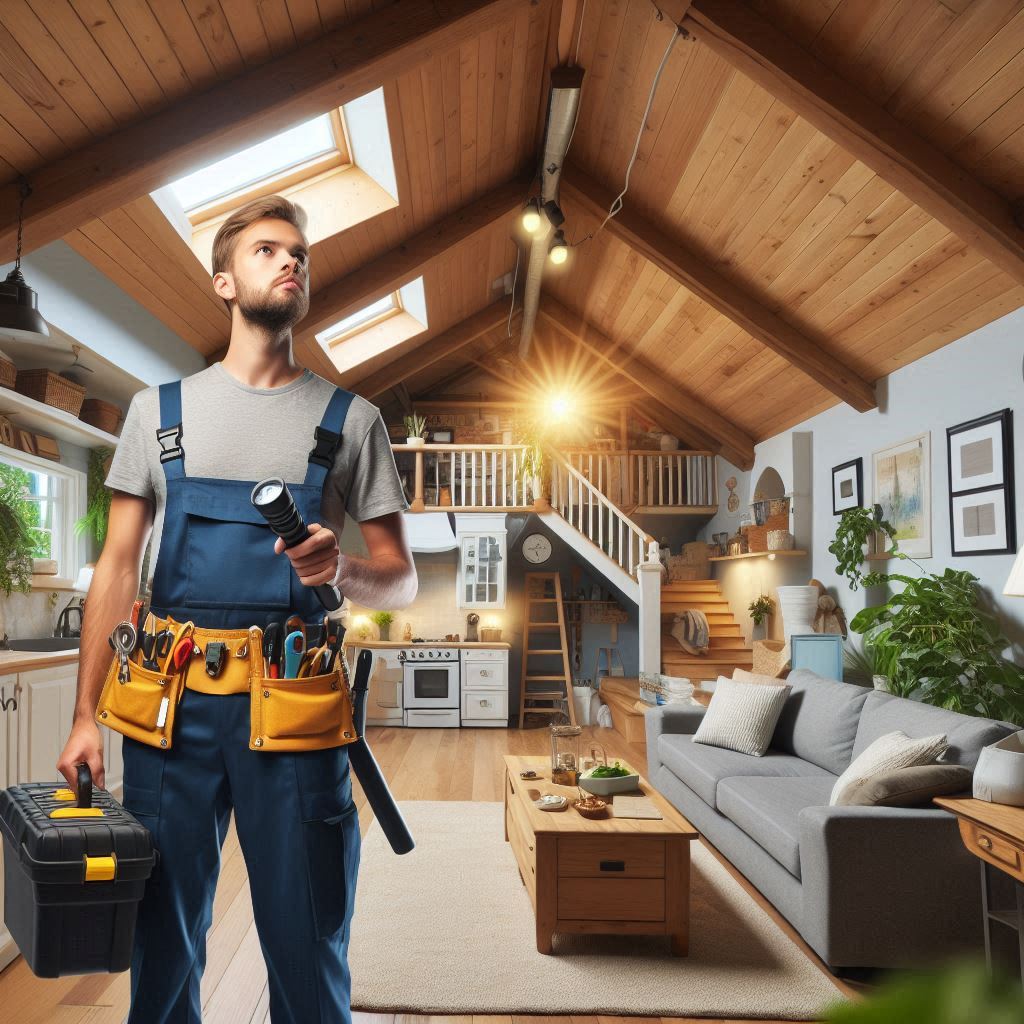
One common problem identified during inspections was cracks in the foundation walls. These cracks can occur due to a variety of factors, such as soil movement, water pressure, or poor construction practices. If left unaddressed, these cracks can expand over time, leading to further structural damage and potentially compromising the overall stability of the building.
Furthermore, some houses exhibited signs of uneven settling in their foundations. This occurs when different parts of a structure sink at different rates or levels. Uneven settling can result from weak soil composition or improper soil compaction during construction. In extreme cases, this issue can lead to significant structural deformation or even collapse if not rectified promptly.
Moisture infiltration was another prevalent problem detected during inspections. Excessive moisture around or beneath a foundation can weaken its integrity by eroding supporting soils or causing corrosion in reinforced steel bars (rebar). Common sources include leaky plumbing fixtures, poor drainage systems, or inadequate waterproofing measures implemented during construction.
Additionally, inadequate support systems were found in some homes’ foundations—a grave concern given their role in distributing loads effectively throughout a structure’s substructure elements (e.g., footings). Weak supports could result from using insufficiently sized beams/columns or improperly spaced piers/piles/foundations pads—an indication that builders did not consider load calculations adequately before constructing those components.
The presence of these critical safety issues in the foundations of numerous homes raises serious concerns about the quality of construction and building codes enforcement. It is essential for homeowners, contractors, and local authorities to take immediate action to rectify these problems before they lead to catastrophic consequences.
Addressing such structural weaknesses requires a comprehensive approach that involves hiring qualified professionals, such as structural engineers or foundation repair specialists. These experts will thoroughly assess the extent of the damage and recommend appropriate remedial measures tailored to each unique situation.
Some potential solutions may include installing additional support beams or underpinning existing foundations using methods like helical piers or concrete pilings. In cases where moisture infiltration is an issue, implementing proper waterproofing techniques and improving drainage systems are crucial steps toward preserving a strong foundation.
In conclusion, the home inspection report has uncovered critical safety issues related to hidden structural weaknesses in many houses’ foundations across the city. Cracks in foundation walls, uneven settling, moisture infiltration, and inadequate support systems were among the most common problems found. Addressing these issues promptly through professional intervention is essential not only for maintaining occupants’ safety but also for ensuring property value and longevity. By taking appropriate actions now, homeowners can avoid further complications down the line while enjoying peace of mind knowing their homes are safe and stable.
Revealing the Dangers of Outdated Plumbing Systems in Home Inspection Reports
A home inspection report is an essential tool for prospective homeowners and buyers, providing a comprehensive assessment of the condition of the property. These reports are conducted by trained professionals who meticulously inspect every aspect of a house to identify any potential issues or safety hazards. One critical safety concern that is often uncovered in home inspection reports is outdated plumbing systems.

Plumbing systems play a vital role in our homes, supplying clean water and removing waste efficiently. However, over time, these systems can deteriorate due to age, wear and tear, or improper maintenance. Outdated plumbing systems pose several dangers that need to be addressed promptly.
One significant issue with outdated plumbing systems is the increased risk of leaks. As pipes age, they become more susceptible to corrosion and deterioration. This can lead to small cracks or holes developing in the pipes’ surface, allowing water to escape. Undetected leaks can cause extensive damage to walls, floors, and ceilings as well as promote the growth of mold and mildew.
Furthermore, leaking pipes not only result in wasted water but also increase utility bills significantly. The constant dripping or running water adds up quickly over time – it’s like throwing money down the drain! Identifying these leaks through a thorough home inspection allows homeowners to address them promptly before they escalate into costly repairs.
Another common problem found in outdated plumbing systems is low water pressure. Over time mineral deposits build-up inside older pipes resulting from hard water conditions; this restricts the flow of water leading to reduced pressure at fixtures such as faucets and showerheads.
Low water pressure may seem like a minor inconvenience at first glance; however it can affect various daily activities like taking showers or washing dishes properly – making them longer than necessary causing frustration for individuals living in affected properties eventually reducing overall efficiency around house chores & hygiene practices if not resolved timely.
Additionally,some homes built before 1986 may still have lead-containing pipes which were used extensively back then.These old lead pipes pose a serious health hazard as they can contaminate the water supply, especially if the water is acidic or has been stagnant for an extended period. Exposure to lead in drinking water can have severe health consequences, particularly for children and pregnant women.
Home inspection reports provide homeowners with valuable information about the plumbing system’s condition, allowing them to take appropriate measures to replace or repair outdated pipes before any potential health risks arise. In some cases, it may be necessary to test the water quality in homes with older plumbing systems regularly.
In conclusion, home inspection reports play a crucial role in identifying critical safety issues that may go unnoticed by prospective homeowners or buyers. Outdated plumbing systems present significant hazards such as leaks, low water pressure, and even potential lead contamination. Regular inspections are essential to ensure that these issues are detected early on and addressed promptly. By taking proactive steps towards maintaining and upgrading their plumbing systems, homeowners can ensure the safety and well-being of their families while also preventing costly repairs down the line.
Understanding the Risks Associated with Mold and Indoor Air Quality
A home inspection is an essential step in the process of buying a new house. It provides potential buyers with a detailed report on the condition of the property, including any safety issues that need to be addressed. One critical area that inspectors focus on is mold and indoor air quality.
Mold can pose serious health risks to occupants of a home. When present in large quantities, it releases spores into the air which can cause respiratory problems, allergies, and even more severe health issues. In addition to these health concerns, mold growth can also lead to structural damage if left untreated.

The presence of mold in a home is often due to excess moisture or water damage. This could be caused by leaky pipes or roofs, poor ventilation, or high humidity levels. A thorough inspection will identify any areas where moisture may be accumulating and provide recommendations for remediation.
Indoor air quality is another crucial aspect of a home’s safety that inspectors examine closely. Poor indoor air quality can result from several factors such as inadequate ventilation, chemical pollutants from cleaning products or furniture materials, and radon gas emissions.
Radon gas is particularly concerning because it is colorless and odorless, making it difficult for homeowners to detect without proper testing equipment. Prolonged exposure to radon increases the risk of lung cancer significantly.
Inadequate ventilation contributes to poor indoor air quality by trapping pollutants inside the house rather than allowing them to disperse outside. This issue can result from improperly sealed windows or doors or lack of mechanical systems like exhaust fans in bathrooms and kitchens.
Chemical pollutants are often overlooked but can have detrimental effects on occupant health over time. Common household cleaning products contain volatile organic compounds (VOCs) that are released into the air during use and contribute negatively to indoor air quality.
To address these critical safety issues related to mold and indoor air quality revealed in a home inspection report, several steps should be taken:
1) The first and most important step is to address any moisture issues. This may involve repairing leaks, improving ventilation systems, or installing dehumidifiers in high-humidity areas.
2) If mold growth is identified, it must be properly remediated by professionals who are trained in safely removing and treating mold. DIY methods often do not fully eradicate the problem and can result in further health risks.
3) Testing for radon gas should also be conducted if it has not been previously done. Radon test kits are readily available at home improvement stores and offer a simple way to determine the presence of this hazardous gas.
4) Improving ventilation is essential to ensure good indoor air quality. This may involve installing exhaust fans or whole-house ventilation systems that promote airflow throughout the home.
5) Lastly, homeowners should consider using environmentally friendly cleaning products that have lower VOC levels or switching to natural alternatives like vinegar and baking soda.
In conclusion, a thorough home inspection report will uncover critical safety issues related to mold growth and indoor air quality. These risks pose significant health hazards to occupants if left unaddressed. By taking appropriate steps such as addressing moisture problems, remediating mold correctly, testing for radon gas, improving ventilation systems, and using safer cleaning products, homeowners can create a healthier living environment for themselves and their families.
Identifying Fire Safety Concerns: From Faulty Wiring to Lack of Smoke Alarms
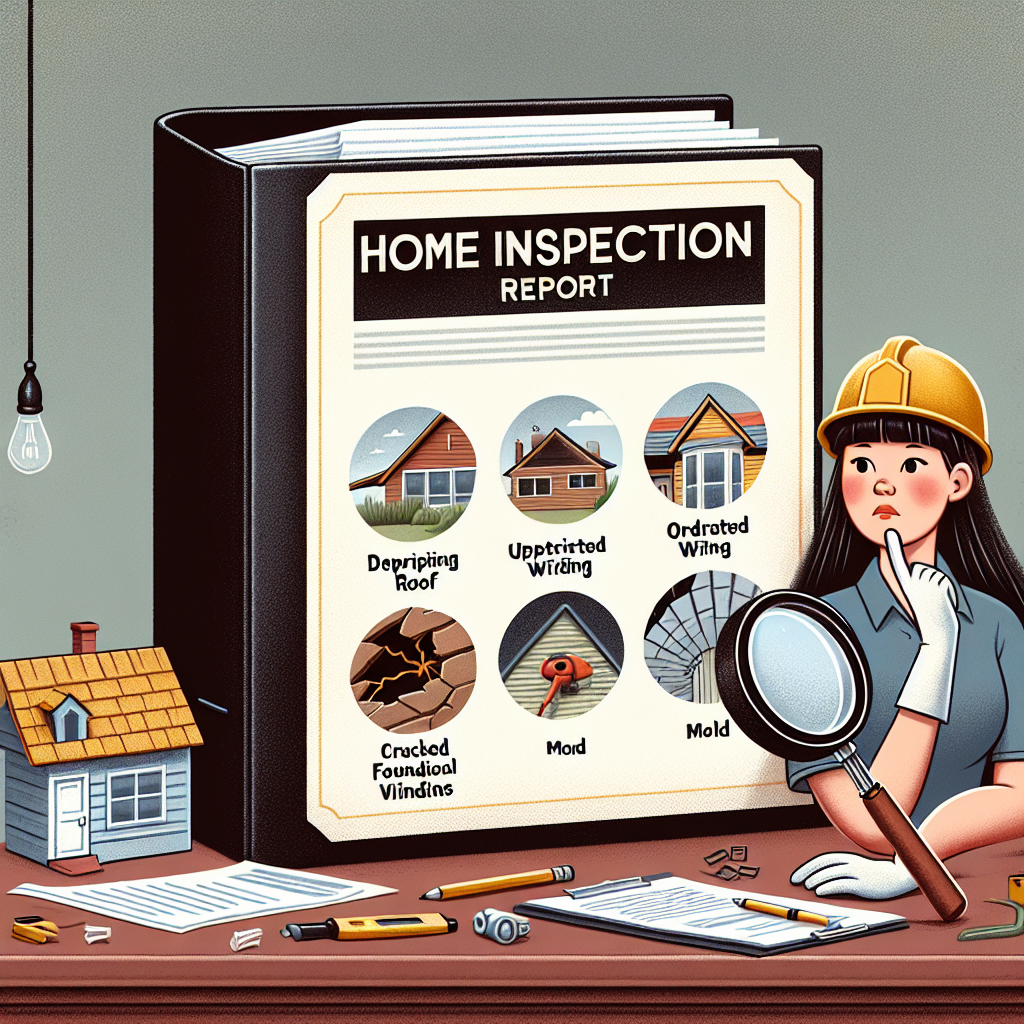
A critical safety concern is often uncovered during a home inspection report. This report serves as a comprehensive evaluation of the property’s condition, including potential fire safety issues. From faulty wiring to a lack of smoke alarms, identifying and addressing these concerns is essential for ensuring the safety of residents.
One common issue that can be identified in a home inspection report is faulty wiring. Faulty wiring poses a significant risk for electrical fires, which can quickly spread throughout the property. During the inspection, an experienced professional will examine the electrical system to ensure it meets current safety standards. They will assess whether all wiring and electrical components are properly installed and functioning correctly.
Another important aspect of fire safety that may be addressed in a home inspection report is the presence or absence of smoke alarms. Smoke alarms play a crucial role in detecting fires early on and alerting occupants to evacuate safely. The inspector will check if smoke alarms are present in every required location within the house, such as hallways and bedrooms. They will also inspect whether these devices are operational by testing their functionality.
In addition to smoke alarms, carbon monoxide detectors should also be assessed during the home inspection process. Carbon monoxide (CO) is an odorless and colorless gas that can be produced by malfunctioning appliances or heating systems. A CO detector ensures early detection of this harmful gas, providing residents with sufficient time to evacuate before succumbing to its effects.
Furthermore, proper ventilation plays an integral role in minimizing fire risks within residential properties. Insufficient ventilation can lead to heat buildup and potentially ignite flammable materials nearby. During an inspection, inspectors will assess whether each room has adequate ventilation through windows or mechanical means such as exhaust fans.
The existence and maintenance of fire escapes should not go unnoticed during inspections either—particularly relevant for multi-story buildings or those with basements requiring alternative escape routes if staircases become inaccessible due to flames or structural damage.
Inspectors evaluate existing escape routes’ overall condition, ensuring they are clear of obstructions and can be easily accessed in case of an emergency.
Moreover, fire safety measures extend beyond electrical and structural components. The presence and accessibility of fire extinguishers is another critical factor examined during the home inspection process. Inspectors will determine whether the property has appropriately placed fire extinguishers that are up to date with inspections and fully functional. Additionally, they will evaluate whether occupants have been informed on how to properly operate these devices.
Overall, a home inspection report is crucial for identifying potential fire safety concerns within residential properties. From faulty wiring to the absence or improper functioning of smoke alarms and carbon monoxide detectors, these reports shed light on critical issues that must be addressed promptly. Ensuring proper ventilation, accessible escape routes, and the availability of functional fire extinguishers also play essential roles in creating a safe living environment for residents. By addressing these concerns identified in the home inspection report, homeowners can mitigate fire risks and promote peace of mind knowing their property meets necessary safety standards
Shedding Light on Potential Carbon Monoxide Threats in Residential Properties
Carbon monoxide (CO) is an odorless, colorless gas that poses a significant threat to the safety of residential properties. The potential presence of this silent killer has been brought to light in recent home inspection reports, highlighting critical safety issues that homeowners need to address urgently.
One common source of carbon monoxide leaks in homes is faulty or improperly maintained heating systems. Furnaces and boilers are designed to burn fuel and produce heat for our comfort, but when they are not functioning properly, they can emit dangerous levels of CO into the air we breathe. This issue can be exacerbated by inadequate ventilation, which allows the gas to accumulate indoors.
Another frequently identified problem in home inspections is malfunctioning or blocked chimneys and flues. These essential components are responsible for directing smoke and harmful gases outside the property safely. However, if they become damaged or obstructed, carbon monoxide can build up inside the dwelling instead. Homeowners must ensure regular maintenance and cleaning of their chimney systems to prevent these hazardous conditions.
Additionally, attached garages pose a hidden danger when it comes to carbon monoxide exposure within residential properties. If vehicles parked inside garages are left running without proper ventilation or with doors connecting directly to living areas open, deadly exhaust fumes containing high concentrations of CO can infiltrate living spaces undetectedly.
Beyond these specific sources mentioned earlier in home inspections reports—faulty heating systems,
damaged chimneys and flues, as well as attached garages—the use of certain household appliances also raises concerns about potential CO threats.
Gas-powered stoves used extensively for cooking purposes have been found responsible for elevated levels of carbon monoxide within residences during routine home inspections. While these appliances generally have built-in mechanisms designed to minimize CO emissions during normal operation when poorly installed or maintained improperly; there is an increased risk associated with their usage.
Furthermore, wood-burning fireplaces can generate significant amounts of carbon monoxide if not correctly vented. Although they create a cozy atmosphere, the mesmerizing warmth can quickly turn into a life-threatening situation if smoke and toxic gases are not directed safely outside.
To mitigate the risks associated with carbon monoxide in residential properties, there are several crucial steps homeowners should take. Firstly, regular inspections of heating systems, chimneys, and flues by qualified professionals should be conducted annually to identify and address any potential issues promptly. Additionally, installing carbon monoxide detectors in key areas throughout the home is essential for early detection of high CO levels.
Moreover, proper ventilation practices must be followed when using gas-powered appliances or operating vehicles inside attached garages. It is imperative to ensure adequate airflow to prevent CO accumulation indoors.
In conclusion, home inspection reports have shed light on critical safety issues related to carbon monoxide threats in residential properties. Identifying faulty heating systems, damaged chimneys and flues, as well as improperly used household appliances like stoves and fireplaces; these reports highlight the importance of regular maintenance and proper ventilation for preventing deadly CO leaks. Homeowners must prioritize their safety by addressing these concerns promptly through annual inspections by professionals while also installing CO detectors strategically within their homes.
Examining the Impact of Asbestos and Lead-Based Paint on Home Safety
A recent home inspection report has uncovered critical safety issues that homeowners need to be aware of. Specifically, the report highlighted the impact of asbestos and lead-based paint on home safety. These two substances have long been recognized as significant health hazards, and it is crucial for homeowners to understand their potential risks.

Firstly, let’s discuss asbestos. Asbestos is a naturally occurring mineral that was widely used in construction materials until the late 20th century due to its heat-resistant properties. However, it has since been linked to serious health conditions such as lung cancer and mesothelioma. The problem lies in the fact that when asbestos-containing materials are disturbed or deteriorate over time, microscopic fibers can be released into the air and easily inhaled.
Unfortunately, many older homes still contain asbestos in various forms such as insulation, flooring tiles, roofing shingles, and pipe insulation. Therefore, it is essential for homeowners to have their properties inspected by professionals who can identify these hazardous materials accurately.
Similarly concerning is lead-based paint which poses severe risks particularly for young children. Lead was commonly used in household paints until 1978 when regulations were enacted to prohibit its use due to its detrimental effects on health. When ingested or breathed in through dust particles from deteriorating lead-based paint surfaces or during renovation work without proper precautions, lead can cause developmental delays, behavioral problems, learning disabilities,and even organ damage.
It is crucial for parents with young children living in older homes or planning renovations to have their properties tested for lead-based paint presence.The good news is that trained inspectors can conduct tests using specialized equipment like x-ray fluorescence analyzers or collect samples from walls and other painted surfaces followed by lab analysis if necessary.These assessments allow homeowners not only ensure their homes’ immediate safety but also take appropriate actions should any remediation efforts be needed.
To mitigate these risks effectively , there are several steps homeowners can take.Firstly,it’s essential they educate themselves about the potential presence of asbestos and lead-based paint in their homes, especially if the property was built before regulations were enacted.Secondly, homeowners should consider engaging professionals certified in asbestos or lead inspection to conduct thorough assessments to identify any hazards.Furthermore,if such hazardous materials are found, it is highly recommended that experts who specialize in removal or remediation be consulted. These professionals have the knowledge and equipment required to safely eliminate or manage these substances without causing further harm.
In conclusion, the recent home inspection report has shed light on critical safety issues surrounding asbestos and lead-based paint. It is crucial for homeowners to understand the potential risks associated with these substances and take appropriate actions. Educating oneself about their presence, conducting inspections by trained professionals,and employing specialists for removal or remediation when needed are all steps toward ensuring a safer living environment for all residents. By addressing these concerns proactively , homeowners can minimize health risks and maintain a healthy home environment for themselves and their families.
Uncovering Radon Gas Exposure Risks: Health Implications and Mitigation Measures
Radon gas is a naturally occurring radioactive gas that emanates from the decay of uranium in soil, rock, and water. It is odorless, tasteless, and invisible, making it difficult to detect without proper testing equipment. Radon gas can seep into homes through cracks in the foundation or walls, gaps around pipes and cables, or even through well water. This silent intruder poses a serious health risk as it is the second leading cause of lung cancer worldwide.
Exposure to radon gas has been linked to an increased risk of developing lung cancer, especially for individuals who are smokers or have a family history of the disease. According to estimates by the Environmental Protection Agency (EPA), radon exposure causes about 21,000 deaths from lung cancer each year in the United States alone. The World Health Organization (WHO) has also classified radon as a Group 1 carcinogen – meaning there is sufficient evidence to prove its link with cancer.
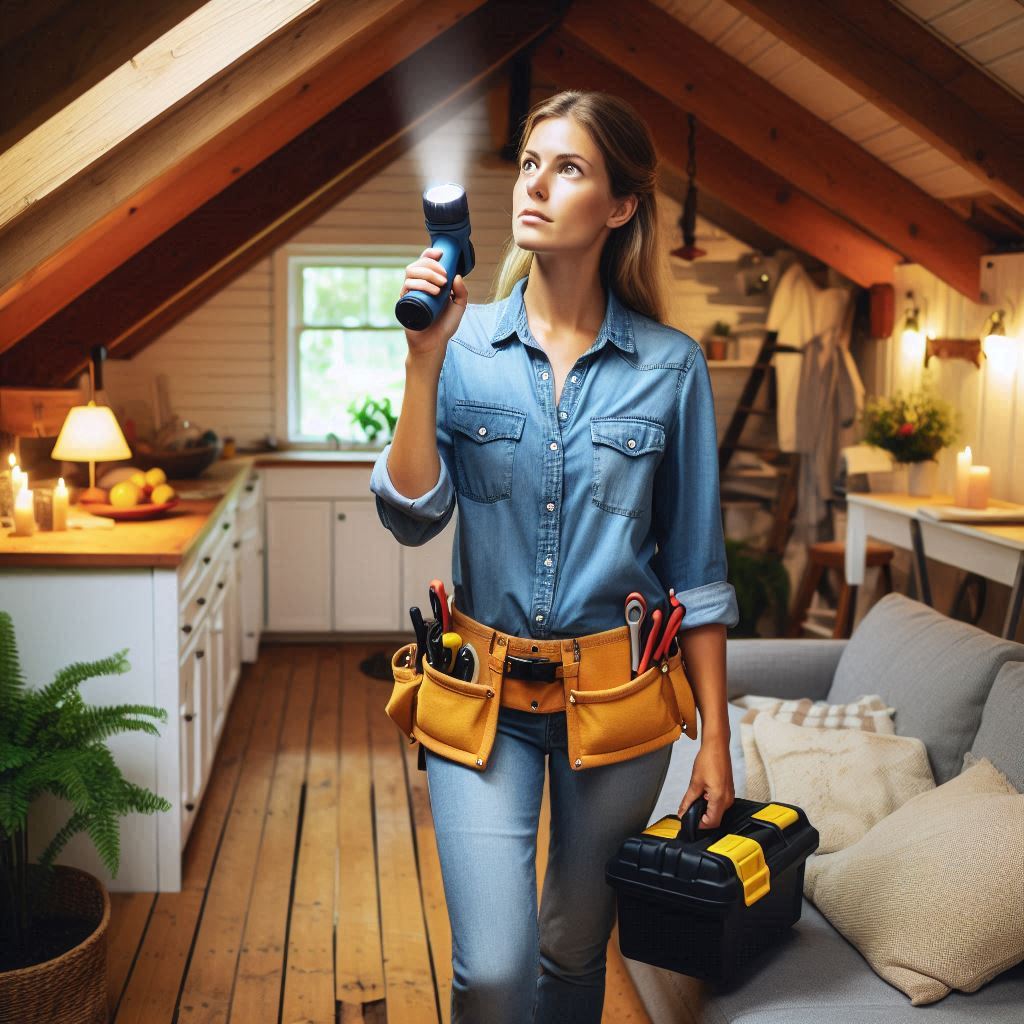
Mitigating radon gas exposure starts with awareness and education about its health implications. Homeowners should be proactive in understanding how this gas can infiltrate their homes and take steps towards mitigation if necessary. One way to determine if your home is at risk for high levels of radon is by conducting a simple test using do-it-yourself kits or hiring professionals for more accurate measurements.
When high levels of radon are detected in a home inspection report, several mitigation measures can be implemented to reduce exposure risks. One common method is sub-slab depressurization which involves creating suction points beneath the foundation slab or basement floor to draw out radon-laden air before it enters living spaces above. This technique utilizes vent pipes connected to fans that exhausts the collected gas safely outside.
Another effective strategy involves sealing cracks and openings in foundations or walls using caulk or other appropriate materials. By minimizing entry points for radon infiltration into homes, homeowners can significantly reduce their exposure risks. Additionally, improving ventilation in basements and crawl spaces can help dilute the concentration of radon gas indoors.
It is important to note that radon levels vary across different geographical locations due to variations in soil composition and underlying geological formations. Therefore, it is advisable for homeowners to consult local authorities or experts familiar with their region’s radon potential when assessing the need for mitigation measures.
To ensure the effectiveness of mitigation efforts, it is crucial to regularly monitor and test for radon levels in homes even after mitigation systems are installed. Radon gas concentrations can fluctuate over time due to factors such as changes in weather conditions or alterations made within a home’s structure. Periodic testing will help identify any new sources of infiltration or unexpected increases in indoor concentrations.
In conclusion, uncovering critical safety issues related to radon gas exposure through home inspection reports is vital for protecting occupants from the health risks associated with this silent killer. Recognizing the implications of high radon levels and implementing appropriate mitigation measures can significantly reduce these risks and provide homeowners with peace of mind knowing that they are taking proactive steps towards safeguarding their health. By raising awareness about this hidden hazard, promoting regular testing, and encouraging effective remediation techniques, we can work towards minimizing the impact of radon on lung cancer rates worldwide.
The Significance of Properly Functioning HVAC Systems for Indoor Comfort and Safety
In a recent home inspection report, critical safety issues were uncovered that shed light on the significance of properly functioning HVAC systems for indoor comfort and safety. Homeowners often overlook the importance of their heating, ventilation, and air conditioning (HVAC) systems until they encounter problems that disrupt their daily lives. However, this report highlights how a malfunctioning or improperly maintained HVAC system can pose serious risks to both comfort and safety within the home.
Firstly, it is essential to understand why HVAC systems are crucial for indoor comfort. These systems play a fundamental role in regulating temperature, humidity levels, and air quality within residential spaces. When these factors are balanced correctly, occupants can enjoy comfortable living conditions regardless of external weather conditions. This not only enhances overall well-being but also improves productivity and reduces stress levels.

Furthermore, an adequately functioning HVAC system contributes significantly to maintaining proper indoor air quality. The primary purpose of ventilation within these systems is to remove stale air from inside the house while simultaneously replacing it with fresh outdoor air. This constant exchange helps eliminate pollutants such as dust particles, allergens, mold spores, and volatile organic compounds (VOCs), which could otherwise accumulate indoors over time.
However, when an HVAC system malfunctions or is neglected through lack of maintenance or regular inspections – as was observed in this particular home inspection report – various safety hazards arise. One major concern highlighted by the report was inadequate airflow due to clogged filters or obstructed ductwork. Reduced airflow not only affects overall comfort but can also lead to poor indoor air quality as pollutants remain trapped inside the house instead of being filtered out effectively.
Additionally, improper combustion or gas leaks resulting from faulty furnaces or heat exchangers pose severe health risks to homeowners if left undetected or unaddressed. Carbon monoxide (CO), known as “the silent killer,” is produced when combustion is incomplete, and it can quickly accumulate within a poorly ventilated space. This colorless and odorless gas is highly toxic, causing symptoms such as headaches, nausea, dizziness, and even death in extreme cases.
The report also pointed out potential electrical hazards arising from faulty HVAC systems. Electrical issues such as frayed wires or overloaded circuits pose a significant risk of fire if not addressed promptly. Overheating caused by improper electrical connections or worn-out components can easily spark a blaze that threatens both property and lives.
To ensure the proper functioning of HVAC systems for indoor comfort and safety, homeowners must prioritize regular maintenance and inspections. Proper maintenance involves cleaning or replacing filters regularly to promote efficient airflow while minimizing indoor air pollution. Ductwork should be checked for any blockages or leaks that could compromise the system’s performance.
Equally important is professional inspection of heating equipment such as furnaces or boilers to identify potential issues like heat exchanger cracks or gas leaks before they become hazardous threats. Adequate ventilation also plays a crucial role in maintaining air quality, so homeowners should ensure that vents are unobstructed and properly sealed to prevent backdrafting – the reverse flow of exhaust gases into living spaces.
In conclusion, this home inspection report serves as a stark reminder of the critical safety issues that can arise from malfunctioning or neglected HVAC systems. These essential systems play an integral role in maintaining indoor comfort by regulating temperature, humidity levels, and air quality within homes. Neglecting their maintenance compromises not only comfort but also poses serious health risks due to poor indoor air quality and potential gas leaks or electrical hazards. Homeowners must prioritize regular inspections to address these concerns promptly for the well-being and safety of their families.
10.Investigating Pest Infestations: Evaluating the Impact on Property Integrity and Occupant Well-being
Pest infestations can pose critical safety issues in homes, affecting both property integrity and occupant well-being. When conducting a home inspection, it is essential to thoroughly investigate these infestations to assess their impact and determine appropriate measures for mitigation.
One of the primary concerns regarding pest infestations is the structural damage they can cause. Termites, for example, are known to feed on wood, potentially compromising the stability of walls, floors, and even foundations over time. Similarly, rodents such as rats or mice have a habit of gnawing through electrical wiring and insulation materials, increasing the risk of electrical fires or other hazards. Therefore, evaluating the extent of these damages becomes crucial in understanding how severe an infestation is and what repairs may be necessary.
Moreover, pests also pose health risks to occupants. Certain insects like cockroaches carry pathogens that can contaminate food preparation surfaces and utensils. This contamination may lead to various diseases such as salmonellosis or gastroenteritis when consumed by individuals within the household. Furthermore, some people may experience allergic reactions due to exposure to allergens produced by pests like dust mites or cockroaches.
In order to accurately evaluate the impact of a pest infestation on both property integrity and occupant well-being during a home inspection process several factors should be considered:
Firstly, identifying signs of an active infestation is crucial; this includes sighting live insects or rodents themselves but also observing telltale signs like droppings or gnaw marks. Additionally , checking for evidence such as nests or burrows could help identify hidden colonies that might not be immediately visible.
Furthermore , assessing areas where pests commonly thrive will help provide insight into potential problem spots within the house . Kitchens , bathrooms , basements , attics are all spaces with conditions conducive for pest activity . Moisture accumulation , cracks in walls make them favorable environments that need close scrutiny during the inspection.
Examining the extent of property damage caused by pests requires a comprehensive evaluation. This can include checking for signs of decay or weakening in wooden structures, as well as inspecting electrical wiring and insulation materials for any visible damages attributable to rodents. Determining whether these damages are superficial or have compromised structural integrity is essential in determining necessary repairs.
To evaluate occupant well-being, it is important to assess potential health hazards posed by pests . This can involve observing signs of allergen production such as shed skin , feces , or eggs which would trigger allergic reactions . Additionally , investigating factors that attract pests into homes like poor sanitation practices may give insights on how to prevent future infestations .
In conclusion, pest infestations present critical safety issues that must be thoroughly investigated during a home inspection. Assessing both property integrity and occupant well-being is crucial in understanding the impact of an infestation and determining appropriate measures for mitigation. By identifying signs of active infestations, evaluating areas prone to pest activity, and assessing property damage and health risks associated with pests, inspectors can provide valuable information that aids homeowners in maintaining safe living conditions.In conclusion, a home inspection report can uncover critical safety issues that require immediate attention. These issues may range from structural problems to electrical or plumbing hazards, and they pose a significant risk to the occupants of the house. It is crucial for homeowners or potential buyers to address these safety concerns promptly in order to ensure the well-being and security of everyone living in the home. Neglecting these issues could lead to accidents, injuries, or even serious property damage. Therefore, taking necessary actions based on the findings of a thorough home inspection is essential for maintaining a safe living environment.
